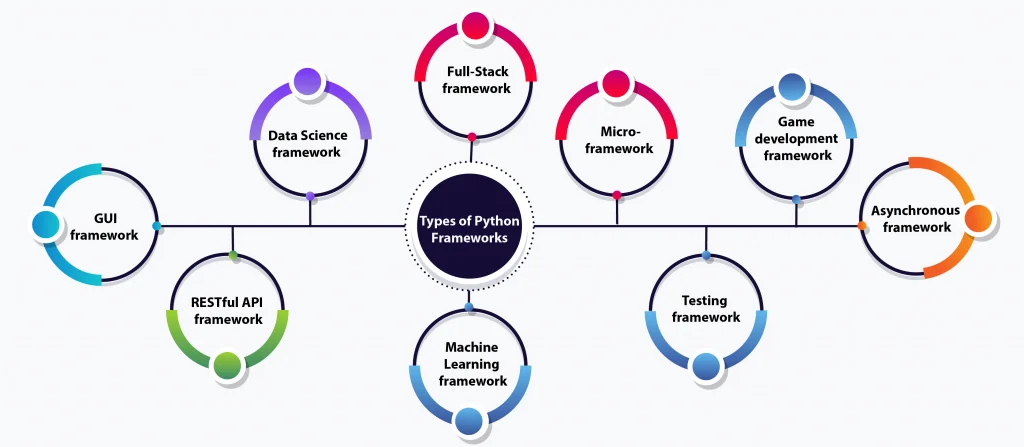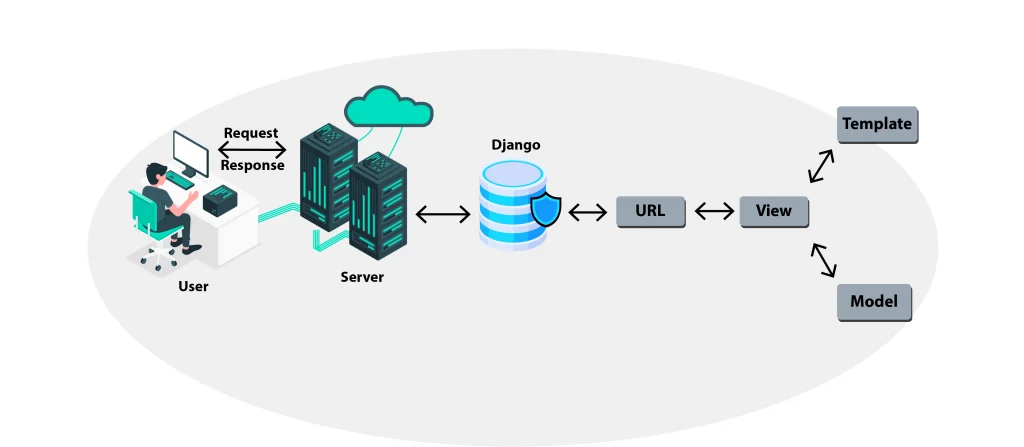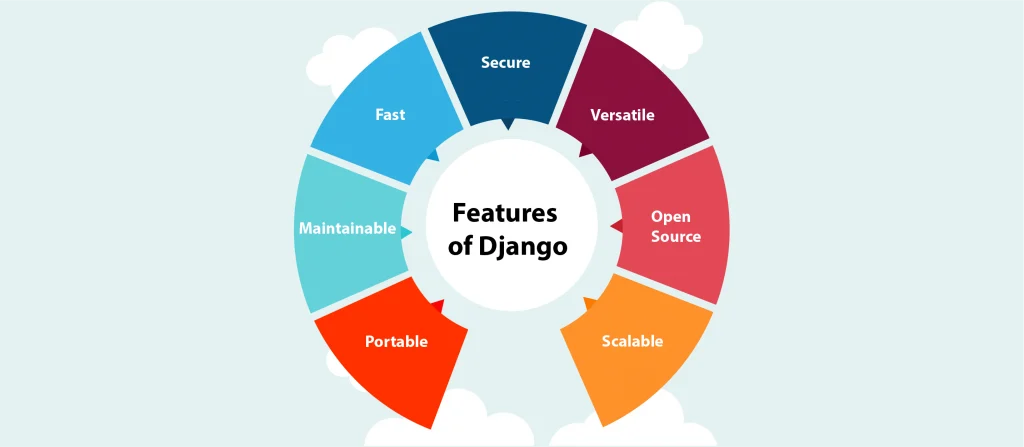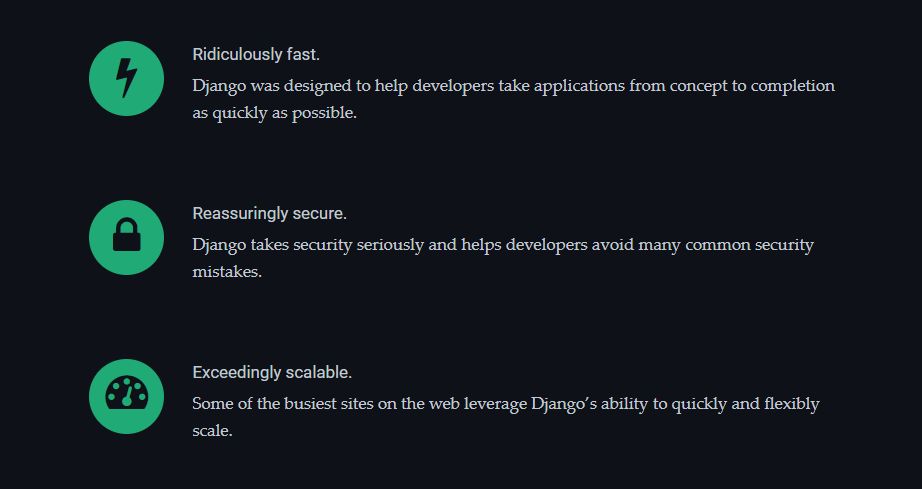Table of Contents
ToggleIntroduction
Back in the late 1990s, you could freshen up and make coffee while trying to connect to the Internet and load a website. Today, websites don’t take longer than 5.5 seconds to load. With modern languages such as Python, Go, Rust, to name a few etc. and web frameworks like Django, React, Next, Ruby on Rails, etc., creating a user-friendly website that is dynamic, interactive and responsive is an easy task. Web development continues to evolve as newer technologies enter the market. In this blog, we will look at Django, a Python-based web framework that allows you to create efficient web applications.
What is a Python framework?
Frameworks simplify and streamline the process of creating applications. In the context of web development, Python frameworks have built-in modules, libraries, and tools that offer a reusable but structured base for developers to create software applications. Python frameworks are specifically designed to build web applications. Instagram, YouTube, Pinterest, Dropbox, SurveyMonkey, and Spotify are some popular web applications built using Python. Python frameworks such as Django, Flask, and Pyramid come with built-in features, such as templating engines, ORM (Object-Relational Mapping) systems, and tools for handling HTTP requests and responses. Python frameworks are known to improve development speed, maintainability, and adherence to best practices.
Types of Python Frameworks

Python frameworks can be divided into three main types:
- Full-Stack framework
- Micro framework
- Asynchronous framework
- Full-Stack framework
A full-stack Python framework offers one-stop solutions for all web development requirements. A full-stack framework like Django has built-in libraries that help developers during the creation of databases, front-end interfaces, and back-end services. - Micro framework
A microframework, as the name suggests, offers limited components that can be used to build lightweight, minimalistic web applications. Developers would have to do extensive coding while using these, as microframeworks do not offer a database abstraction layer, form validation, web template engine, authentication functionality, authorization, input validation, and input sanitation. - Asynchronous framework
An asynchronous Python framework is a type of microframework that takes help from Python’s Asyncio library. It allows developers to handle and manage large sets of concurrent connections. It helps execute many tasks together, such as web servers handling multiple simultaneous connections or applications involving frequent I/O operations.
Apart from the above three, Python frameworks can be categorized further based on what they are being used for:
- Testing frameworks
- RESTful API frameworks
- GUI frameworks
- Data Science frameworks
- Machine Learning frameworks
- Game development frameworks
What is Django?
Django is a web application framework written in Python, and one of the most popular frameworks used, especially in the United States. It helps developers build applications from concept to completion efficiently and quickly. Dubbed as a “ridiculously fast” framework by its developers, Django is free and open source and is available under the BSD license. Pronounced ‘Jango,’ Django is named after the famous jazz guitarist, Django Reinhardt and was first released for public use in 2005. The latest official version is Django 5.0. and needs the latest version of Python 3.
Latest Releases
| Release Series | Latest Release | End of mainstream support | End of extended support |
|---|---|---|---|
| 5.0 | 5.0 | August 2024 | April 2025 |
| 4.2 LTS | 4.2.8 | December 4, 2023 | April 2026 |
| 3.2 LTS | 3.2.23 | December 7, 2021 | April 2024 |
Unsupported Previous Releases
| Release Series | Latest Release | End of mainstream support | End of extended support |
|---|---|---|---|
| 4.1 | 4.1.13 | April 5, 2023 | December 1, 2023 |
| 4.0 | 4.0.10 | August 3, 2022 | April 1, 2023 |
| 3.1 | 3.1.14 | April 6, 2021 | December 7, 2021 |
| 3.0 | 3.0.14 | August 3, 2020 | April 6, 2021 |
| 2.2 LTS | 2.2.28 | December 2, 2019 | April 11, 2022 |
| 2.1 | 2.1.15 | April 1, 2019 | December 2, 2019 |
| 2.0 | 2.0.13 | August 1, 2018 | April 1, 2019 |
| 1.11 LTS 3 | 1.11.29 | December 2, 2017 | April 1, 2020 |
| 1.10 | 1.10.8 | April 4, 2017 | December 2, 2017 |
| 1.9 | 1.9.13 | August 1, 2016 | April 4, 2017 |
| 1.8 LTS | 1.8.19 | December 1, 2015 | April 1, 2018 |
| 1.7 | 1.7.11 | April 1, 2015 | December 1, 2015 |
| 1.6 | 1.6.11 | September 2, 2014 | April 1, 2015 |
| 1.5 | 1.5.12 | November 6, 2013 | September 2, 2014 |
| 1.4 LTS | 1.4.22 | February 26, 2013 | October 1, 2015 |
| 1.3 | 1.3.7 | March 23, 2012 | February 26, 2013 |
Django is a full-stack web development framework with support from MySQL, PostgreSQL, SQLite, and Oracle databases and helps developers build feature-rich applications. As it uses ORM for object mapping into database tables, developers can use the same code with different databases.
Django was initially used for content management systems but is now used for a variety of web applications. Web developers can use Django to build feature-rich, secure and scalable websites — social networks, news sites, wikis, and content management systems.

Don't miss out on your chance to work with the best!
Apply for top job opportunities today!
Architecture of Django

Django follows the MVT (Model-View-Template) architecture. Model is the structure of storing the data in the database, View is a Python function that handles the web request and sends a response, and Template contains static content like HTML, CSS, and JavaScript. This means that the framework can communicate between the three without the need for complicated code.
Features of Django

Fast
A Python developer does not need extensive back–end knowledge when making a fully functional website with Django. The built-in tools and libraries help developers to create web applications in less time.
Secure
Django’s user authentication system helps avoid common security mistakes, such as SQL injection, cross-site scripting, cross-site request forgery (CRSF) and clickjacking. It helps manage user accounts and passwords. Using Django templates protects against the majority of XSS attacks in most cases.
Versatile
Developers can use Django to create any type of application. Whether you are building a social media page or a content management system for a client, Django’s versatility allows content to be delivered in any form – HTML, RSS feeds, JSON, and XML.
Open-Source Community
Django’s GitHub repository sees contributions from more than 2000 contributions every month. This helps beginners and programmers find solutions easily.
Scalable
Each component of Django’s architecture is independently built and allows for hassle-free change or replacement. Django’s component-based shared-nothing architecture helps create a clear distinction between the different parts. For instance, it is possible for Instagram to scale for increased traffic by adding hardware at any level: caching servers, database servers, or application servers.
Maintainable
Django makes use of the DRY (Don’t Repeat Yourself) principle, which helps avoid unnecessary duplication of code. Django also allows for the grouping of familiar functions into reusable applications. Further, along the lines of MVC, group related code is also grouped into modules.
Portable
As Django is written in Python, developers are free to run it on multiple platforms. You can run it on Linux, macOS, and Windows. Also, many web hosting providers have the infrastructure and documentation needed to host Django sites.
Top Reasons to Use Django for Web Development

- Django is written in Python, which covers a wide range of programming tasks and problems.
- Django has reliable documentation, which makes it easy to develop high-quality applications.
- Django’s ‘batteries included’ feature gives developers everything necessary to build a full-stack application.
- Django comes with 4000+ packages that cover profiling, testing, and debugging.
- Django offers toolkits to help developers work on Data Science, AI, and Machine Learning projects.
- Django offers fintech tools to build projects for math-heavy apps like mortgage software.
- Django’s reusable apps, tools, and features allow developers to assemble MVPs and prototypes efficiently.
- Django’s ORM lets developers use the framework for one or several different databases in one project.
- Django’s frequent security patches and LTS versions make it a safe choice to build web apps.
- Django is compatible with DevOps methodology, which helps shorten lifecycles while maintaining business objectives.
- The REST API offered by Django helps build great APIs in just three lines of code.
- The Django community promptly responds to queries and issues related to bug fixes.
- Python’s source code is human relatable, which lets you use Django to create SEO-optimized URLs.
- Django is regularly tested and improved by a large developer audience.
- Django’s multilingual support lets developers indicate parts in an app that need translation, which helps the app reach a larger audience base.
Read More- How to start a career in web development?
Top Websites that Use Django
Django came into existence as an internal project for Lawrence Journal-World, a daily newspaper published in Kansas, United States. However, with its huge potential, Django was fast involved in building e-commerce websites, social media platforms, and other applications. Today, Django has a variety of applications and is actively used to build a wide range of projects.
Top Websites That use Django
Instagram: Django helps Instagram with memory management and maximized service efficiency.
Pinterest: Just like Instagram, Pinterest was built on Django. With more than 400 million active users every month, Django helps the platform with the speed it needs to keep running.
Spotify: The digital music streaming service gets great assistance from Django in offering users personalized playlists.
Dropbox: Django helped Dropbox add an option to sync an account across different devices and share files with other users.
NASA: The NASA website was built using Django. The framework supports the use of high-definition videos and images of space and also supports the website against security threats.
Conclusion
Django is a high-level Python web framework that facilitates rapid development and clean, pragmatic design. With almost 8 million monthly downloads, it is one of the most-used Python frameworks for web development. Django’s built-in features, such as templating, database management, admin panel, signals, and views, help build fast and reliable websites. Once you have a strong grasp of Python, you can use Django to build feature-rich websites. Django’s portability, scalability, security, and battery included features make it a top choice for building fast, secure, SEO–optimized web applications.
Take control of your career and land your dream job!
Sign up and start applying to the best opportunities!

FAQs
Django is a free and open-source web application framework freely available to the public. Its source code can be downloaded from the public repository.
Yes, Django has a a permissive license for extensive commercial use.
Django is mostly used to develop secure and maintainable websites.
Instagram, Spotify, YouTube, Mozilla, NASA, Dropbox, and Venmo are some companies that use Django.
Django is a full-stack web framework that offers tools and features for both front-end and back-end web development.



